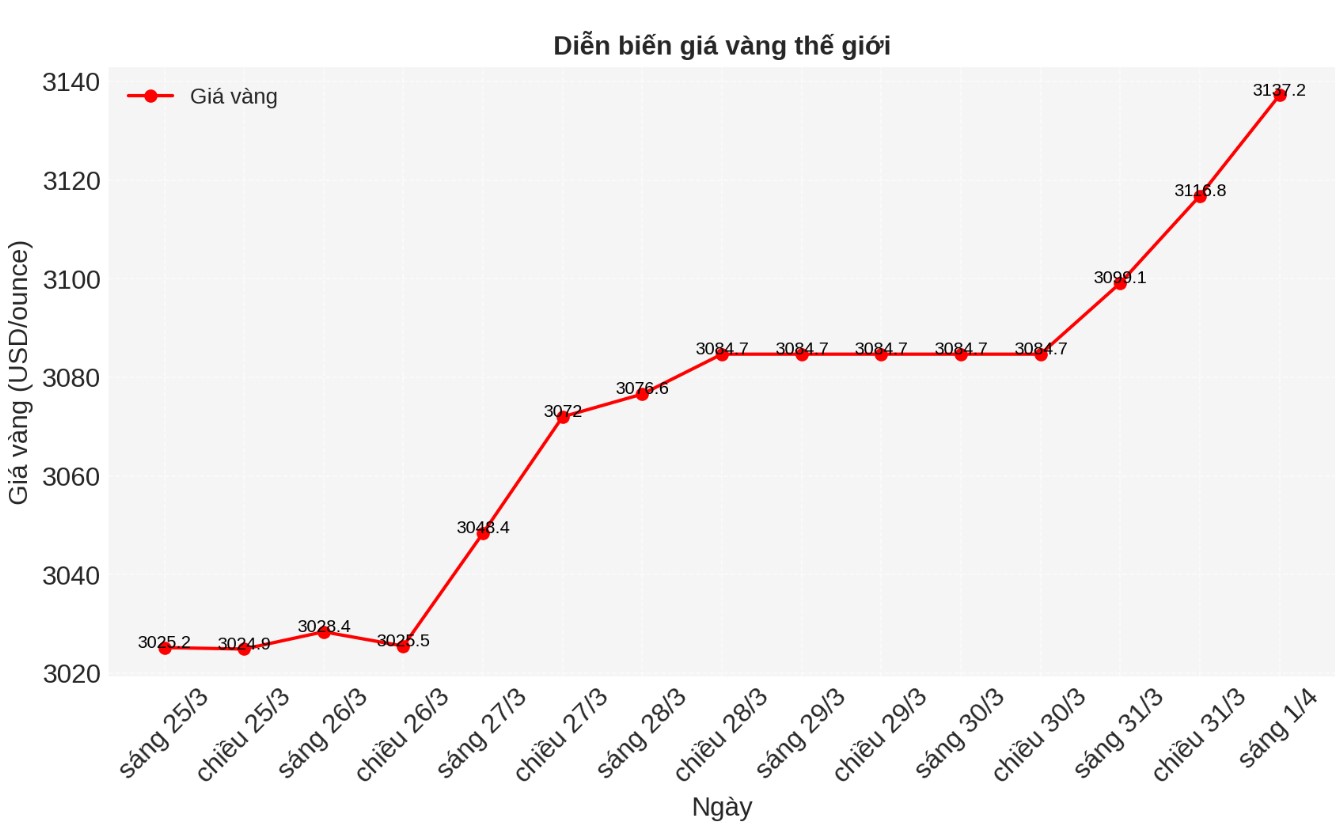Three "big guys" in the investment banking sector, Morgan Stanley, Citigroup and Goldman Sachs, have adjusted their gold price forecast for 2025 and the following years as the increase of this precious metal has not shown any signs of stopping. New supporting factors continue to appear, helping gold prices maintain record highs.

Morgan Stanley: Gold has not yet reached its peak
Amy Gower - commodity strategist in the metals and mining sector at Morgan Stanley said that gold prices have continuously hit new peaks for a long time.
I think there are two different stories driving gold. One is that actual demand has changed since 2022 when central banks increased their gold purchases sharply, double the speed of the previous decade and has remained so until now. Recently, investment demand for physical gold, gold bars, gold bars and ETFs has also begun to increase. This is a new flow of money into gold, and there is probably still room to continue, Gower said.
Gower also expects the macro environment to be increasingly favorable for gold in correlation with stocks and bonds. High interest rates have created an unfavorable macro context for gold. But if interest rates fall, it will be a strong supporting factor, she added.
She emphasized that the interest rate trend is more important than the current interest rate. " Interest rates are still high compared to the period before the interest rate increase cycle started. The important thing is whether we are at the peak, and whether the upcoming trend will go down? If there is, gold will become more attractive.
When asked about the price gold could reach, Gower said Morgan Stanley's bullish scenario is $3,300 - $3,400/ounce this year. However, she warned of the possibility of "destroying demand" when gold prices increase too quickly.
When commodity prices increase sharply, demand may be affected. For gold, jewelry accounts for double the central bank's purchases each year. But when buying jewelry, people often have a fixed budget, instead of buying according to the desired amount of gold. Therefore, high prices may reduce demand, Gower explained.
She also noted that some central banks have suspended gold purchases, such as the Reserve Bank of India in December and February. It may take a period of stability for cash flow to continue to flow into gold, she added.

Citigroup: Gold could reach $3,500/ounce
Max Layton - Global Director of Commodity Research at Citigroup - also has a positive view on gold.
The underlying factors of this gold rally remain intact and will continue to push prices higher. In our baseline scenario, gold could hit $3,200 an ounce in the next few months, and even $3,500 an ounce if the US economy weakens beyond expectations, he told CNBC.
Layton also pointed out that US trade policy could be a new driver for gold demand.
US President Donald Trump and his team have introduced a series of very high tariffs on April 2. If some of these are implemented, they could negatively impact global growth as well as the US economy in the next 3-6 months, he said.
History shows that when economic growth slows, the savings ratio often increases, leading to increased demand for gold ETFs. We expect this to push gold prices to a new level in the next 1-2 quarters, Layton emphasized.
Goldman Sachs: Gold could surpass $4,000/ounce by 2025
Goldman Sachs has given an extremely optimistic but unlikely scenario, where gold could surpass $4,000/ounce by the end of 2025.
The bank has raised its gold price forecast for 2025 from $3,100/ounce to $3,300/ounce. However, if the market is faced with serious stress, they believe that gold could surpass 4,200 USD/ounce by the end of 2025, even up to 4,500 USD/ounce by 2026.











